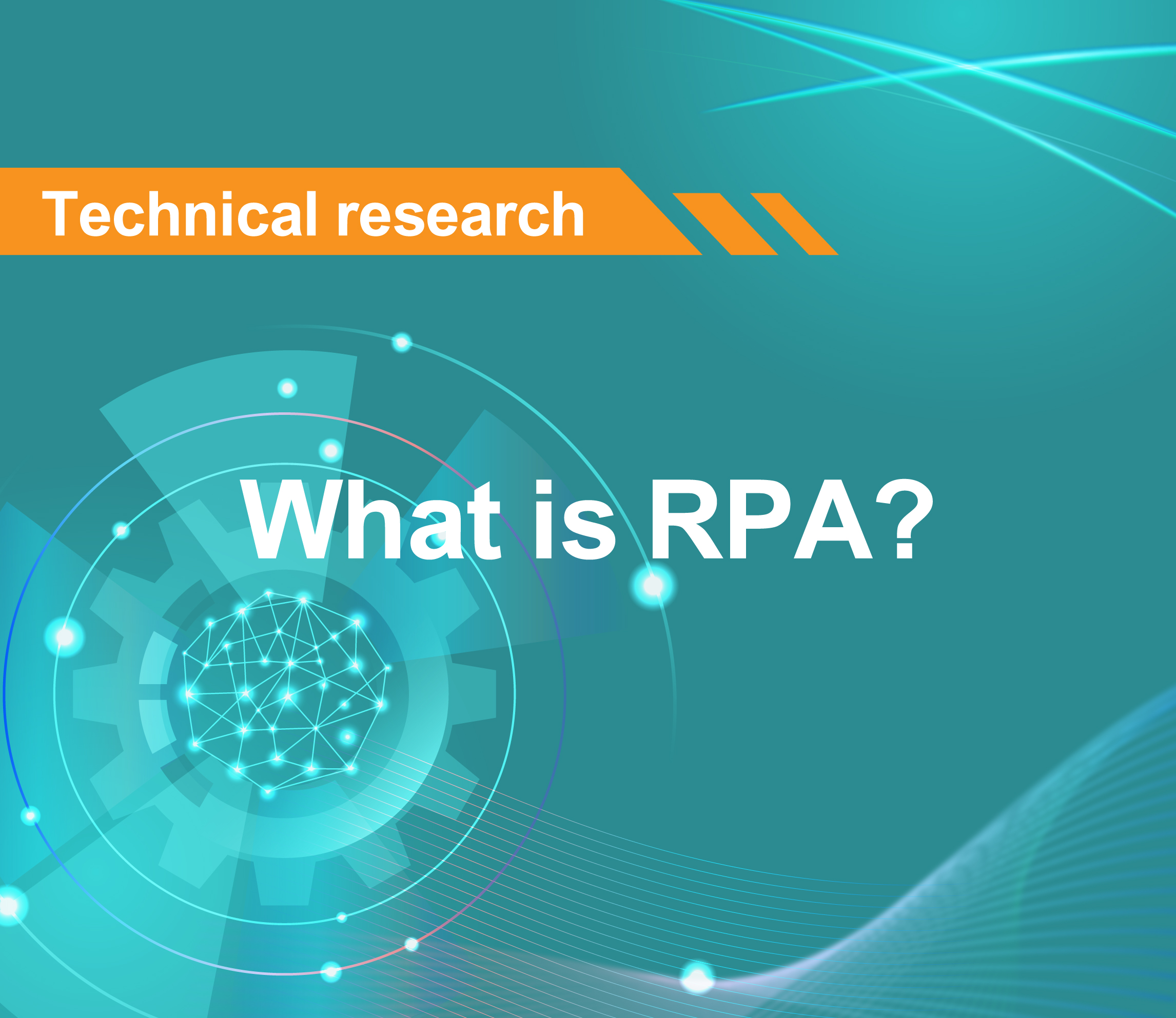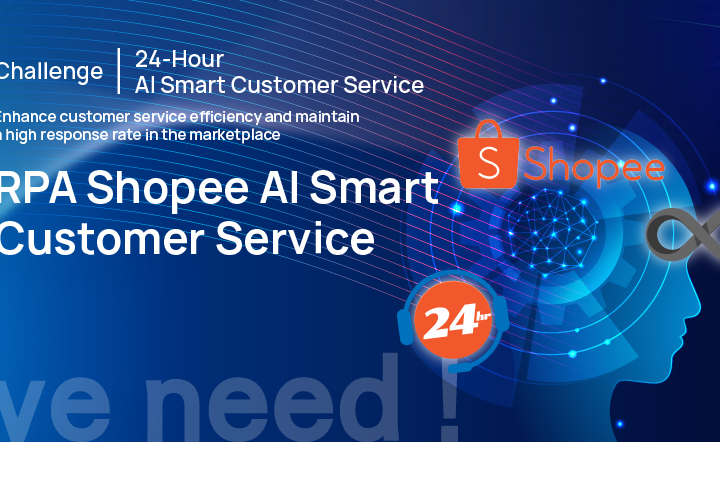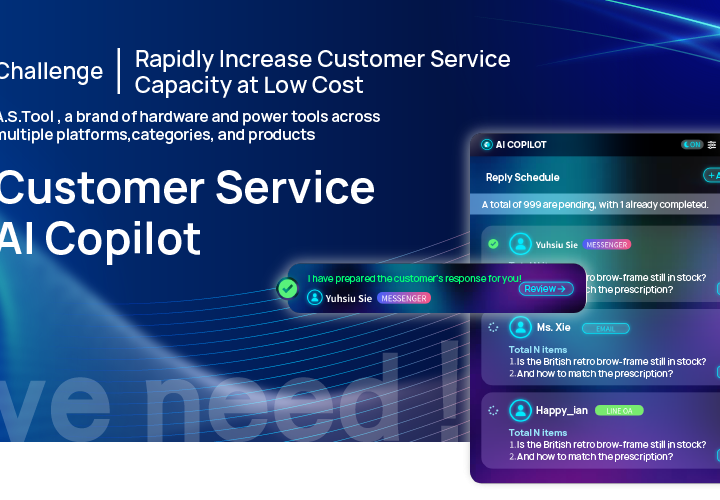【Technical 】What is RPA, and how can it be applied to business to maximize efficiency?
Robotic Process Automation (RPA), also known as software robots, employs intelligent automation technology to execute repetitive office tasks typically performed by human workers, such as data extraction, form filling, and document movement.
RPA combines API and user interface (UI) interactions to integrate and execute repetitive tasks between enterprise and productivity applications. By deploying scripts that mimic human processes, RPA tools can autonomously complete various activities and transactions without human intervention. This form of automation utilizes rule-based software to execute a large volume of business process activities, freeing up human resources to focus on more complex tasks.
To stay competitive in the market, RPA tools need to go beyond task automation and expand their capabilities to include Intelligent Automation (IA). This type of automation extends the functionality of RPA by integrating various sub-disciplines of artificial intelligence, such as machine learning (ML), natural language processing (NLP), and computer vision. Intelligent Process Automation requires more than just the simple rules-based systems of RPA; it also requires the ability to “think” and “learn” through data-trained algorithms, enabling software to perform tasks in faster and more efficient ways.
Common Use Cases of RPA
Banking and Financial Services
According to Forrester's report "RPA Service Market Will Reach $12 Billion By 2023," 36% of use cases are in the financial and accounting sectors. Today, many major banks utilize RPA automation solutions to automate tasks such as customer research, account opening, inquiry processing, and anti-money laundering.
ChatGPT Insurance
The insurance industry is ripe with repetitive processes suitable for automation. For instance, RPA can be applied to claims processing operations, regulatory compliance, policy management, and underwriting tasks.
Retail
The rise of e-commerce has made RPA an integral part of the modern retail industry, improving both backend operations and customer experiences. Common applications include customer relationship management, warehouse and order management, customer feedback processing, and fraud detection.
Healthcare
Accuracy and compliance are paramount in the healthcare industry. Some of the world's largest hospitals utilize robotic process automation software to optimize processes such as information management, prescription management, insurance claims processing, and payment cycles.
Difference between RPA and Artificial Intelligence
RPA is often mistaken for Artificial Intelligence (AI), but the two are distinctly different. AI combines cognitive automation, machine learning, natural language processing, reasoning, hypothesis generation, and analytics. The key distinction lies in RPA being process-driven, while AI is data-driven. RPA robots can only follow processes defined by end-users, whereas AI robots use machine learning to identify data patterns, especially unstructured data, and learn over time. AI aims to simulate human intelligence, whereas RPA merely replicates tasks guided by humans.
Low-code functionality for building automation scripts: RPA tools should provide capabilities for creating automation scripts with minimal coding, allowing users with varying levels of technical expertise to develop automated processes efficiently.
Integration with enterprise applications: RPA technology should seamlessly integrate with existing enterprise applications, such as CRM systems, ERPs, and databases, enabling automated processes to access and interact with data across different platforms.
Configuration, monitoring, and security for collaborative management: RPA platforms should offer features for configuring automation workflows, monitoring their performance in real-time, and ensuring data security and compliance with regulatory requirements. Collaborative management tools enable multiple users to work on automation projects concurrently, enhancing productivity and efficiency.
RPA technology enables access to information through legacy systems and integrates well with other applications through frontend integration, allowing automation platforms to perform routine tasks such as logging in, copying, and pasting like human workers. The true value of RPA lies in its rapid and straightforward frontend integration without disrupting underlying systems.
Advantages of RPA

RPA does not necessarily require developers for configuration; drag-and-drop functionality in the user interface makes it easier for non-technical staff to use.
As RPA reduces the workload of teams, employees can be reassigned to other priority tasks that require manpower, thereby increasing productivity and return on investment (ROI).
As robots and chatbots can work around the clock, they can reduce customer wait times and improve customer satisfaction.
By alleviating teams from repetitive high-volume tasks, RPA enables individuals to focus on more thoughtful and strategic decision-making, thereby positively impacting employee morale.
Since RPA robots can be programmed to follow specific workflows and rules, they can reduce human errors, particularly in tasks requiring accuracy and compliance, such as regulatory standards. RPA also provides audit trails, facilitating progress monitoring and quick issue resolution.
Robotic Process Automation software does not disrupt underlying systems, as robots operate on the presentation layer of existing applications. Therefore, robots can be implemented without the need for application programming interfaces (APIs) or deep integration development resources.










